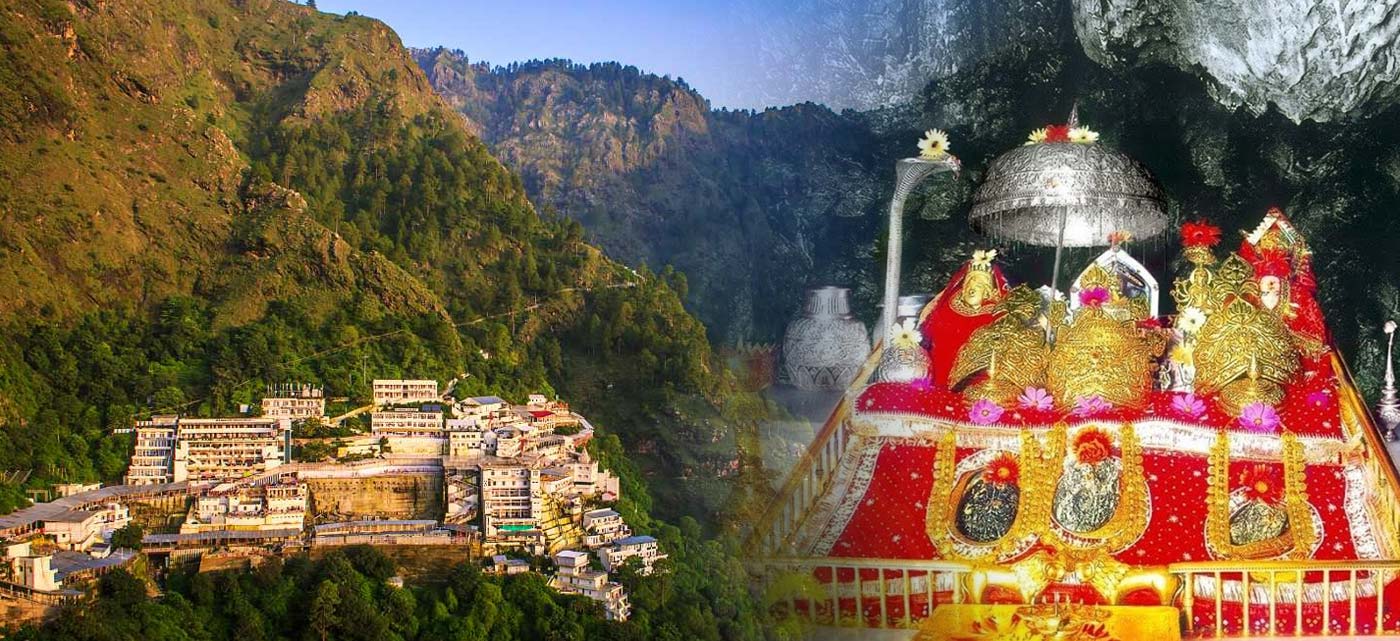Vaishno Devi History
Vaishno Devi Temple is one of the oldest temples in India. It has a rich history which is still unknown to a lot of people. It is not possible to ascertain everything that has happened but, there are certain things that we know about and are eager to share.
A study says that the Vaishno Devi Temple is millions of years old. There was no mention of truth that a female deity was worshiped. The acknowledgment of worshiping Shakti was started, in the Puranic period, at the time of Mahabharata. Before the famous war of Kurushetra between Kauravas and Pandavas, Shri Krishna advised Arjun to take blessings of Mother Goddess for victory. A good amount of people believed that Pandavas were the first to build the temples at Bhawan and Kandoli for showing gratitude for Mother Goddess.
It is also believed that there were five stone structures of Pandavas built adjacent to Trikuta mountain in the holy cave. The historical visit to the Vaishno Devi Temple is of Guru Gobind Singh and was said to be there in the Holy cave who have gone there via Purmandal.
A lot of people still have a believe that the energies of Maa Vaishno Devi surround the shrine of Vaishno Devi Temple. The head of Goddess Sati fell there which has been disputable whereas, other claims that Goddess Sati’s forearm fell here at this place. The Vaishno Devi Temple is the oldest and holiest shrine of all Shaktipeeths.
Architecture of Vaishno Devi Dham
Vaishno Devi temple shows work with a great deal of care and handwork. And Sh. J C Chaudhry's vision, with the assistance of experienced architects from Design Well India (P) Ltd., where Mr Arun Verma served as chief architect, as well as young and brilliant engineers, made the temple.
This temple's characteristic feature is its massive statue of Maa Vaishno Devi. It is brilliantly decorated and dressed with a red saree clubbed with trinkets and weapons of the goddess. These signify her power and strength to fight evil, elegantly sitting on her regal carrier, Lion. Next to it is a massive statue of Lord Hanuman, seated with one folded leg and folded hands, waiting for Maa's blessings.
The Vaishno Devi Dham in Vrindavan has an attached dispensary and library for pilgrims. In addition, it includes two dharamshalas to accommodate visiting devotees. The central hall is for meditation, and the yoga hall is adjacent to it. The location of Vaishno Devi Dham is auspicious and associated with Lord Krishna's growing years.
The most astounding thing is that all of these massive statues are present on the temple's roof. The shrine is unmissable for any tourist to Vrindavan.
Because of its massive size, it is visible from afar. A total of 1,700-tonne mass is present at the foundation level, along with the Raft Foundation at a depth of 4.0 metres below ground level. This is to provide a platform and stability for the gigantic statues. Furthermore, the Maa Vaishno Devi statue, along with her Lion, ornaments and other things required around 400 tonnes of steel and concrete.
With the assistance of sophisticated software and dynamic analysis, these statues are also tested against earthquakes and other major devastation. It's worth noting that the Maa Vaishno Devi Murti (statue) from the ground is 141 feet. The Lion's height from the floor is approximately 35 feet. Lord Hanuman's statue stands 32 feet tall, and his Gadda is 26 feet long.



